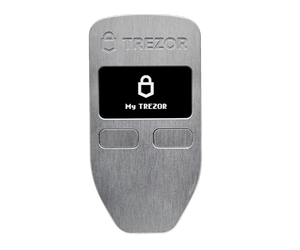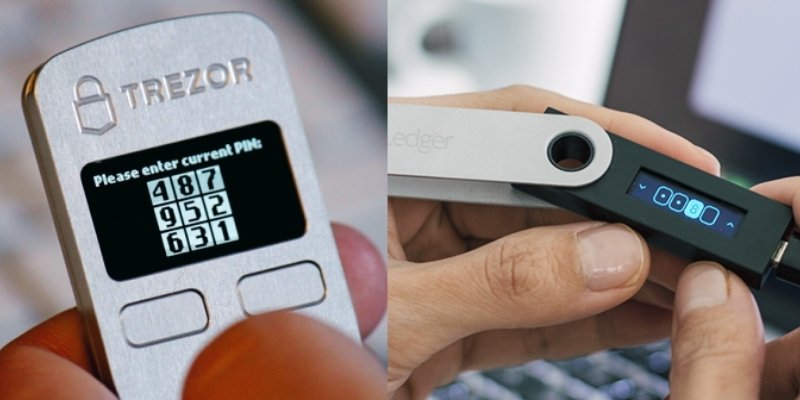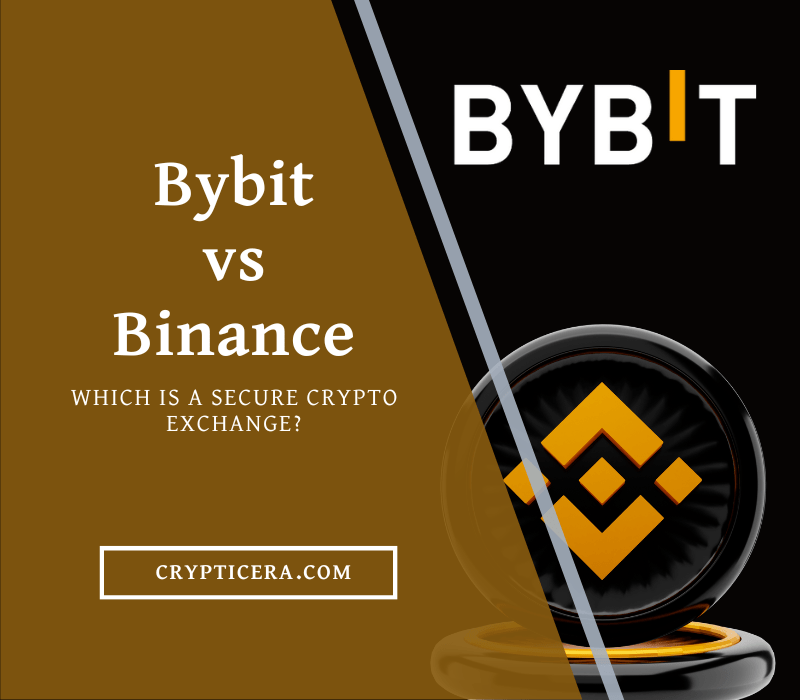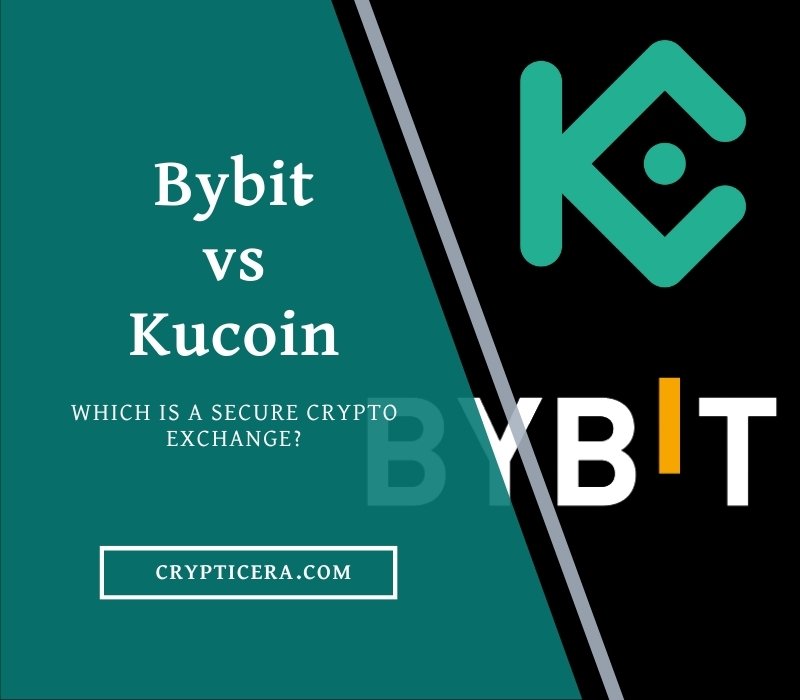Keeping your crypto coins safe and secure is crucial if you are into cryptocurrency. A hardware wallet can help you with that.
But how do you pick the best hardware wallet for you? There are many options out there, but two of the most trusted and popular ones are Trezor and Ledger devices.
In this article, we will compare their basic versions “Trezor Model One vs Ledger Nano S Plus” and see what they offer, what they lack, and which one suits you better.
💡 Quick Verdict:
- Buy Ledger Nano S Plus for: More coins, Staking, Multi-chain NFT storage, and multiple dApp Integration.
- Buy Trezor Model One for: More security (Shamir backup), Open-source firmware, and lightweight.
Trezor Model One vs Ledger Nano S Plus: Key Differences
| Key Point | Trezor model One | Ledger Nano S Plus |
|---|---|---|
| Price | $69 | $79 |
| Release Year | 2014 | 2022 |
| Device Size | 60 mm x 30 mm x 6 mm, 12 g | 62.39 mm x 17.40 mm x 8.24 mm, 21 g |
| Device Material | Plastic | Brushed stainless steel |
| Display | OLED 128 x 64 | LED 128 x 64 |
| Interface | USB Micro-B, Two Buttons | USB-C, Two Buttons |
| Mobile App | No | Yes (Android) |
| Bluetooth Connectivity | ✖ | ✖ |
| Touchscreen | ✖ | ✖ |
| Open Source | ✓ | ✖ |
| Supported Coins | 1289+ | 5,500+ |
| Warranty | 1 year | 1 years |
Trezor Model One Review: Best Bitcoin Hardware Wallet

- Supported cryptocurrencies: 1289+
- Fees: Only network fees
- Hardware Cost: $69
- Mobile App: Yes (Android and iOS)
- Security: ARM Cortex-M3 processor @ 120 MHz
Trezor Model One has a simple design with two buttons that you can press via USB-A. It can connect with more than 1289 coins and tokens, such as Bitcoin, Ethereum, Tether, BNB, XRP, Cardano, Dogecoin, and many others.
The device works with Trezor Suite, an app that you can use on your computer, browser, Android, or iOS device. Trezor Suite lets you send, receive, and manage your coins easily and securely. You can also buy, sell, and trade coins on the app with no Trezor fees.
It creates and keeps your backup seed offline. You can also set a PIN and a passphrase to stop anyone from using your device without your permission.
Pros and Cons of Trezor Model One
Good points:
- It is the first crypto hardware wallet and over 1 million customers trust it for 10 years.
- Easy, safe, and cheap, with a cost of $69.
- Works with more than 1289+ coins and tokens.
- Two-button pad and a hands-on verification option that makes you check every transaction on your device.
- PIN and passphrase protection option that stops others from using your wallet.
Bad points:
- No touchscreen, unlike the Trezor Model T, which may make it more handy to use.
- It does not support some popular coins
- Not good for crypto holders with a lot of different digital assets, as it has a simpler design and function than other wallets.
Ledger Nano S Plus Review: Best Crypto Cold Wallet

- Supported cryptocurrencies: 5,500
- Fees: Only network fees
- Hardware Cost: $79
- Mobile App: Yes (only Android)
- Security: SE Chip ST33K1M5 (CC EAL5+ certified)
The Ledger Nano S Plus is a device that helps you keep your crypto and NFTs safe. It is a new and better version of the Ledger Nano S, with more space, a bigger screen, and more features for Web3 apps.
The Ledger Nano S Plus can hold over 5,500 digital assets, such as Bitcoin, ETH, XRP, ADA, and MATIC. You can also use it to access DeFi and NFT platforms with full control and security. The device has a special chip that protects your private keys from hackers.
You can use the Ledger Live app to do many things with your crypto on your computer or smartphone. You can also view and send your NFTs with Ledger Live and see your NFT collection on the device’s screen.
Pros and Cons of Ledger Nano S Plus
Good Points:
- Store and manage over 5,500 digital assets like crypto, NFTs, and tokens.
- Use up to 100 apps on it at the same time.
- SE chip that protects your keys from hackers.
- It is good for developers and works with Web3 apps.
Bad Points:
- No Bluetooth like the Ledger Nano X, so you need a wire to use it with your phone.
- Not good for mining as it can only do small transactions.
- More costly than the Ledger Nano S, but cheaper than the Ledger Nano X.
Trezor Model One vs Ledger Nano S Plus: Design and Build Quality

How Big and Heavy They Are
The Trezor Model One is a bit smaller and lighter than the Ledger Nano S Plus. The Trezor Model One measures 60 mm x 30 mm x 6 mm and weighs 12 g. The Ledger Nano S Plus measures 62.39 mm x 17.40 mm x 8.24 mm and weighs 21 g.
| Device | Size | Weight |
|---|---|---|
| Trezor Model One | 60 mm x 30 mm x 6 mm | 12 g |
| Ledger Nano S Plus | 62.39 mm x 17.40 mm x 8.24 mm | 21 g |
How They Look
Both devices have a small OLED screen with 128 x 64 pixels of resolution. The screen shows important things like the device status, transaction details, and confirmation codes. The screen is also used to enter the PIN code by matching the numbers on the screen with the buttons on the device.
| Device | Screen |
|---|---|
| Trezor Model One | OLED 128 x 64 |
| Ledger Nano S Plus | OLED 128 x 64 |
How They Work
Both devices have two physical buttons that are used to go through the menus, confirm actions, and enter the PIN code.
The buttons on the Trezor Model One are on the front of the device, below the screen. The buttons on the Ledger Nano S Plus are on the top of the device, on both sides of the USB-C port.
What They Are Made Of
The Trezor Model One has a plastic case that comes in six colors: black, white, gray, green, blue, and pink. The plastic case is not very strong and can be easily scratched or damaged by drops or impacts.
The Ledger Nano S Plus has a brushed stainless steel case that is more resistant to wear and tear. The steel case also protects the device from physical tampering.
| Device | Case |
|---|---|
| Trezor Model One | Plastic case |
| Ledger Nano S Plus | Brushed stainless steel case |
Ledger Nano S Plus vs Trezor Model T: Security
The Trezor Model One has open-source firmware that anyone can check. It also has a feature called Shamir Backup, which lets users split their recovery seed into multiple parts that can be stored separately.
The Ledger Nano S Plus has a closed-source firmware that is certified by CC EAL5+, a high level of security standard for smart cards. It also has a secure element chip (ST33K1M5) that stores the private keys and does cryptographic operations.
Both devices support FIDO U2F, password manager, and offline recovery phrase generation and storage.
| Device | Security Features |
|---|---|
| Trezor Model One | Open-source firmware, Shamir Backup, FIDO U2F, password manager, SSH, GPG, offline seed generation & backup, physical confirmation |
| Ledger Nano S Plus | CC EAL5+ certified firmware, secure element chip, FIDO U2F, password manager, SSH, GPG, offline seed generation & backup, physical confirmation |
Trezor Model One vs Ledger Nano S Plus: Supported Coins & NFTs
The Ledger Nano S Plus can store more than 5,500 different kinds of digital currency, including all ERC-20 tokens. It also works with Ripple, Bitcoin Cash, and Stellar, among other altcoins.
The Trezor Model One supports fewer cryptocurrencies (1289+) than the Ledger Nano S Plus. It does not support Cardano, Ripple, Monero, Eos, Tezos, and Binance Chain.
Trezor model one supports 15+ blockchains, whereas Ledger S plus supports 50+ different blockchains.
Trezor and Ledger both support NFTs and Staking using Ledger Live or Trezor suite apps.
Trezor One vs Ledger Nano S Plus: Software Wallet Integration & Mobile App
The Ledger Nano S Plus can work with more than 50 software wallets, including Ledger Live, MetaMask, MyEtherWallet, Exodus, Electrum, and more. The Trezor One can work with 17 software wallets.
The Ledger Nano S Plus has Ledger Live Mobile, which is a mobile app that lets users buy, sell, exchange, stake, lend, and manage their cryptocurrencies on iOS and Android devices.
The Trezor One does not have a mobile app yet, but it is planning to release an Android app soon. (It has Trezor Suite Lite, but currently not recommended)
Trezor Model One vs Ledger S Plus: Price
The Trezor One costs $69 and the Ledger Nano S Plus costs $79. Both the Trezor One and the Ledger Nano S Plus can be bought online from their official websites or from authorized resellers. The Trezor One can be bought from trezor.io or from Amazon, Newegg, or Etherbit.
The Ledger Nano S Plus can be bought from ledger.com or from Amazon, Newegg, or Etherbit. Both devices offer free shipping worldwide and accept various payment methods such as credit cards, PayPal, Bitcoin, and more.
Final Thoughts: Which Should You Choose?
Choosing between Trezor One and Ledger Nano S Plus can be a tough decision. Both devices offer secure and convenient storage for your cryptocurrencies.
Why You Should Choose Ledger Nano S Plus? If you are looking for a device that supports more coins and blockchains, has a mobile app, and has a more durable steel case, then you may want to go for the Ledger Nano S Plus. It costs $10 more than the Trezor One, but it offers more features and functionality.
Why You Should Choose Trezor Model One? If you are looking for a device that has open-source firmware and offers Shamir Backup ( superb security feature), go for Trezor One.
FAQs: Ledger and Trezor Comparison
Is Ledger Nano S Plus better than Trezor One?
Ledger Nano S Plus has a bigger screen, more storage (1.5 MB), and more blockchains. It’s more convenient and secure.
Trezor One has a simpler interface, a lower price, and open-source firmware. It’s more suitable for advanced users and developers.
What happens if I lose my Trezor One or Ledger S Plus?
Don’t panic. You can still get your funds back with your recovery phrase. It’s a set of 12 or 24 words that you wrote down when you set up your device.
You can use your recovery phrase to restore your keys on another compatible hardware or software wallet. But be careful. Keep your recovery phrase in a safe and secret place. Anyone who has it can access your funds.
Does Trezor or Ledger ever been hacked?
No. Trezor and Ledger devices are very secure. They use encryption and physical security to prevent unauthorized access. But there have been some cases where users have lost their funds due to phishing attacks, fake devices, or compromised computers. So you need to follow the best practices for using hardware wallets.
For example, verify your device, update the firmware, and use a trusted software wallet or web platform.
What is Hardware Wallet?
A hardware wallet is a device that keeps your crypto keys offline. It’s like a safe for your digital money. Hardware wallets protect your funds from hackers, viruses, and damage. You can use them with different software wallets and web platforms to access and manage your crypto.
Related:


